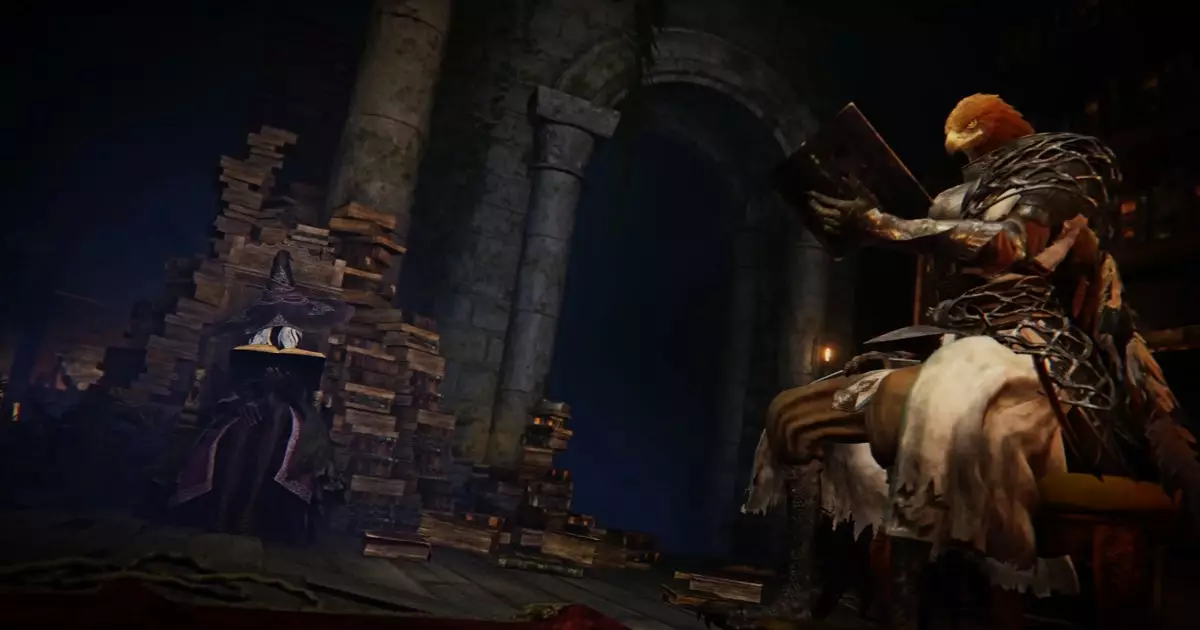The world of video games often thrives on mystery, where hidden details and unexpected lore entice players into delving deeper into the narratives woven by developers. Elden Ring is no exception, with its rich tapestry of intrigue that has drawn in enthusiasts eager to explore every facet of its expansive universe. Recently, discussions surrounding the bird-bodied Guardian character from the Nightreign expansion have sparked curiosity among fans. This character raises fundamental questions about the fusion of humanity and avian traits in design, leading to intriguing speculations about the hidden layers within the game’s art.
Decoding the Guardian’s Design
As players and modders dissect the 3D models of Elden Ring, a specific character stands out: the Guardian, a commanding figure wielding a halberd and reminiscent of mythical protectors. Enthusiasts have pondered whether the Guardian carries a hidden human face beneath the layers of feathers and armor. This speculation stems from a broader trend within the Soulsborne universe—characters often possess backstories that include human elements melded into their current forms. Zullie The Witch, a well-known modder and data miner, has taken it upon themselves to engage with this community curiosity through dedicated analyses that challenge players’ perceptions of the characters they encounter.
Zullie’s examination reveals that, while the Guardian’s form may appear captivatingly cryptic, it does not conceal the human face as many had theorized. Instead, the analysis underscores an essential element of FromSoftware’s design philosophy: a shift from individualized character creation to archetypal representations that serve the game’s narrative cohesively. This revelation not only satisfies some curiosity but also emphasizes the developers’ commitment to the identity of their characters.
Beyond the Guardian: The Mystery of Wylder
While the Guardian’s features have been largely clarified, Zullie’s investigation brings to light another captivating character—Wylder. Unlike the Guardian, who boasts a semi-transparent connection to human traits, Wylder’s appearance remains cloaked in ambiguity. Players have been unable to discern any conventional facial characteristics, unearthing a blank silhouette when peeling back Wylder’s ornate armor. This design choice amplifies the mystery surrounding Wylder, inviting players to fill in the gaps with their imaginations. Many have drawn speculations that Wylder may visually echo the Duchess, adding another layer of interpretative storytelling via character design.
This ambiguity surrounding Wylder introduces a fascinating discourse about identity within the context of Elden Ring. By presenting a faceless figure, the game taps into universal themes of self and anonymity, encouraging players to explore their definitions of identity within the maddening world of The Lands Between. The commentariat claimed Wylder as the proverbial “John” of the FromSoftware universe, suggesting that even amidst existential tales of struggle and redemption, anonymity can serve as a powerful narrative device.
The Community’s Role in Unraveling Mysteries
The community’s engagement with characters like the Guardian and Wylder exemplifies the symbiotic relationship between gamers and creators. Players dissect, discuss, and disseminate their findings, enhancing the overall experience and accessibility of the game world. In return, developers respond with ongoing updates, driving a cycle of curiosity and exploration that defines the gaming experience. The shared moments of discovery often form the backbone of gaming culture, reminding us that we’re part of a larger narrative that transcends individual experiences.
As players dive into the thrilling depths of Elden Ring: Nightreign, the revelations concerning the Guardian and Wylder serve as open threads for further discussion and speculation. Whether these characters represent the complexity and depth that FromSoftware is known for, or simply playful design choices, they invite exploration and engagement that exemplify the power of video games as storytelling mediums. In the digital landscapes we traverse, the search for truth often becomes as captivating as the narratives themselves, paving the way for players to forge their own unique journeys.

